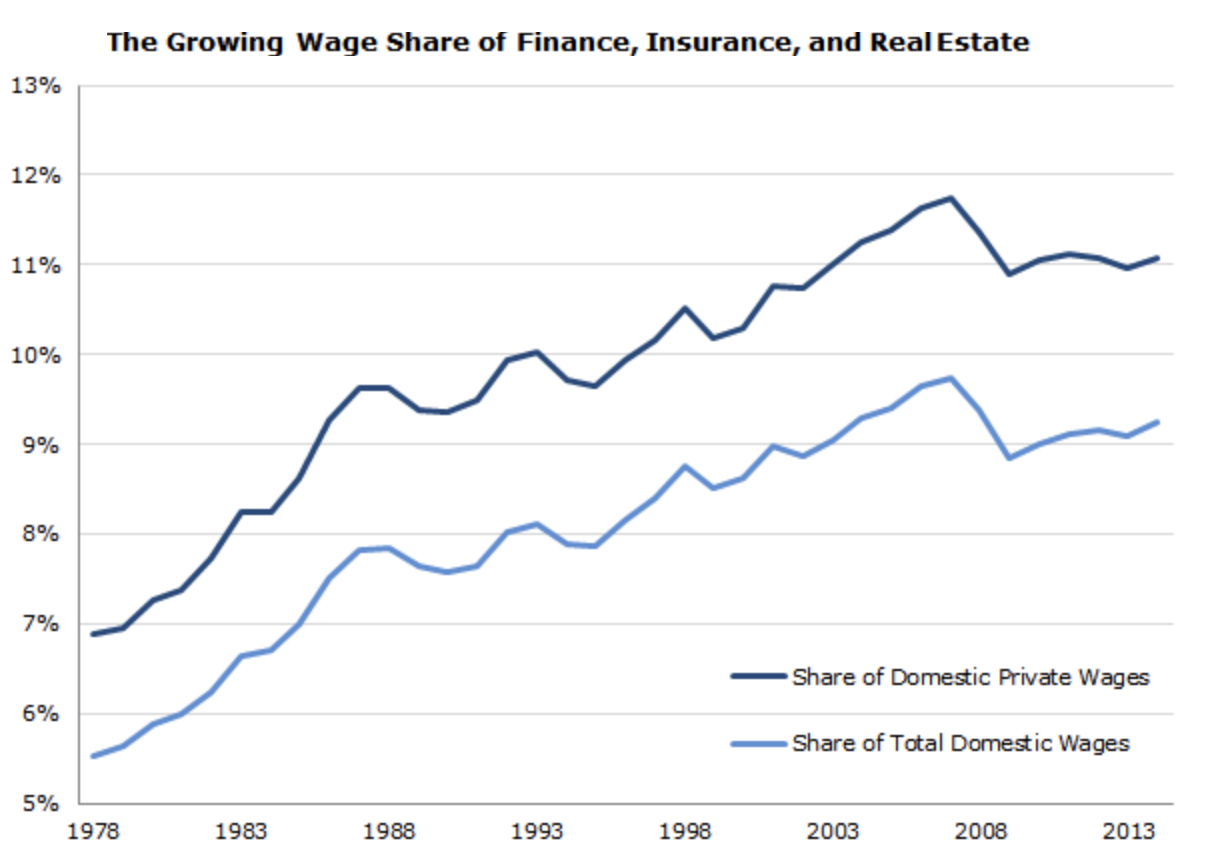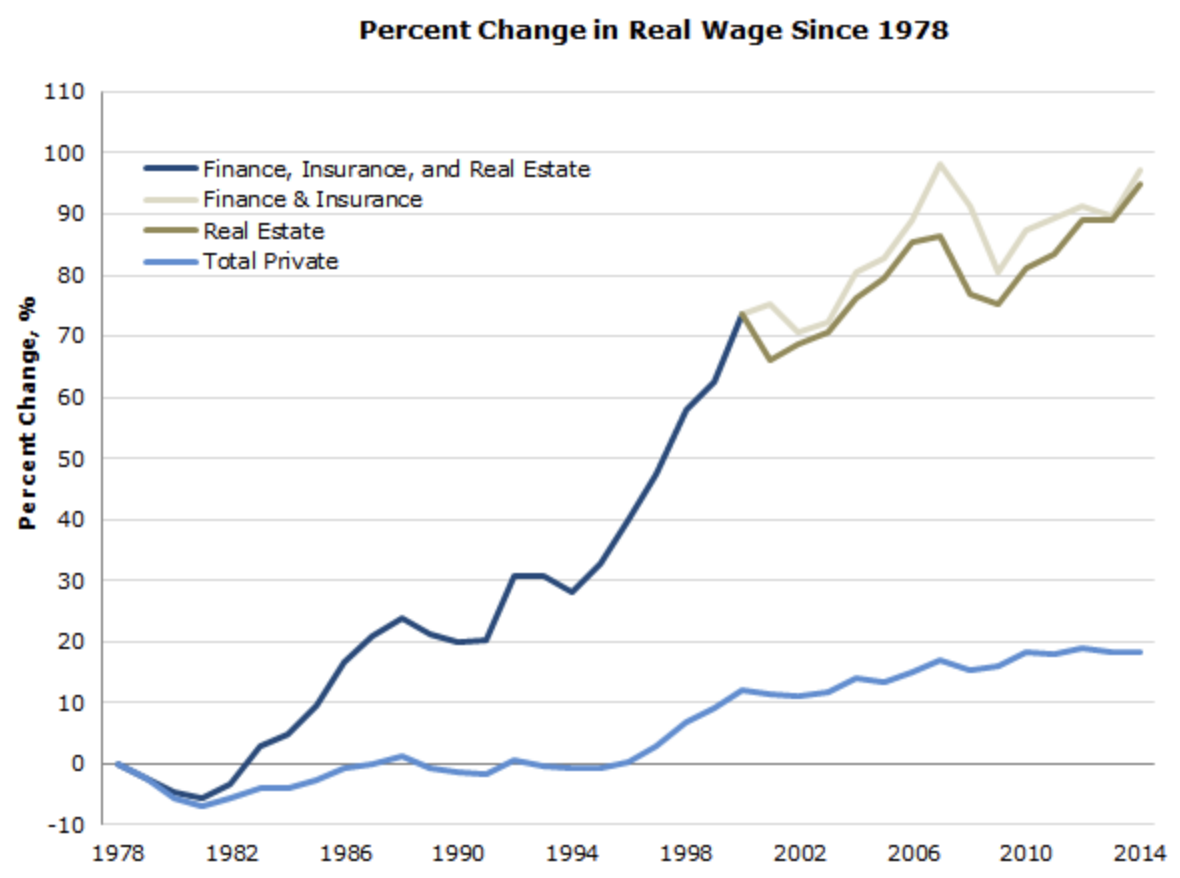Finance is not merely about making money. It’s about achieving our deep goals and protecting the fruits of our labor.
We have this culture of financialization. People think they need to make money with their savings rather than with their own business. So, you end up with dentists who are more traders than dentists. A dentist should drill teeth.
A sound banker is not one who foresees danger and avoids it, but one who, when he is ruined, is ruined in a conventional way along with his fellows, so that no one can really blame him.
It is not for nothing that “Wall Street” has become a potent symbol of inequality and the target of populist discontent. While most workers’ wages have been stagnant for decades, those in the financial services sector have seen healthy growth from levels that were already above average. What’s more, since World War II, the sector has ballooned in size across the developed world. In many ways, finance has become a parasite on host economies, drawing resources away from more beneficial activities while creating dangerous levels of risk for everyone. Ironically, this is due in large part not just to deregulation of finance, but in some cases to over-regulation, which creates byzantine rules that benefit the small coterie of insiders who understand them, and contributes to a revolving door between state agencies and the big banks. The bankers – and realtors and insurers – really are out of control, as they have successfully co-opted the people who are supposed to keep them in check.
FINANCE IN THEORY
The role of finance is to facilitate saving and optimize investments, reducing risk and increasing returns. This first requires collecting money through deposit banks. People use the banks to deposit their earnings. The excess money is invested in loans, or other forms of investment like stock shares, owned either individually or collectively, through funds. Investments can be made on illiquid instruments or liquid ones (those which can be exchanged easily on a stock market). Finance also spreads risk, be it through diversification or insurance. In Insurance, money is collectively set aside to pay for future calamities, allowing projects to go forward that, otherwise, would have entailed too much risk for those undertaking them to shoulder alone. Insurance also facilitates certain forms of consumption. An otherwise reluctant consumer is now willing to buy a house or a car, despite the risk of fire or accident, for she knows she will be covered if catastrophe strikes.
OVER-FINANCIALIZATION
This is all good in theory, but one has to recognize that the finance function, while useful and necessary, has a tendency to grow to excess when unchecked. In the U.S., the size of the financial services sector has quadrupled from about 2% of GDP at the end of World War II to 8% today. When you combine traditional finance, insurance and real estate – known as FIRE – their total share of output has doubled from 10% of GDP to 20% over the same period. These are levels, notably, not seen since the Great Depression. They had started to correct following the financial crisis of 2009, but the onset of quantitative easing pushed them back to pre-crisis levels and then beyond. The signs point clearly to a hypertrophy of finance as a sector of the economy. Making resource allocation more efficient cannot possibly account for such a large part of a well-balanced economy. Palley
The first obvious cost of the over-financialization of the economy is the misallocation of human resources. This is probably the least understood of its effects, but it may be the most socially harmful in the long run. Clever, un-needed financial products, which are forced down the throats of gullible companies and consumers, are made and sold by some of the smartest people in the Western world. More than half the class of 2007 at Harvard, for instance, went into finance and consulting. Roosevelt Institute Huffington Post
In fact, finance, despite the arrival of new technologies that should have dramatically reduced its labor input, has never employed such a large share of the workforce. There is a simple reason for this. Smart and hard-working people are attracted to finance because it is paying better than ever relative to other jobs. Wages in the FIRE sectors have almost doubled since the end of the ’70s, while they have stagnated across the rest of the economy. CEPR The Conversation
Not only is a large part of all this human capital intrinsically misused because of over-financialization, which incentivizes excessive risk taking in order to justify disproportionate remuneration, but it is also not contributing where it is most needed: in making health care more affordable and efficient, in developing new computer and biotechnology services, in preserving manufacturing jobs through increased efficiency and innovation in the Western world.
Finance, rather than being a respectable means to an end, has become an end in itself that is hurting the “real” economic growth it is was designed to facilitate. Forbes magazine summed it up: “The focus by elites on ‘making money out of money’ rather than making real goods and services has led to wealth for the few, and overall national economic decline. In a financialized economy, the financial tail is wagging the economic dog.” Forbes Orhangazi
One of the best illustrations of over-financialization can be found in lending. In the U.K., for instance, while lending to non-financial business has held relatively constant, lending to banks and real estate is ballooning and represents 85% of bank lending. That’s right: Only 15% of bank loans represent direct lending to businesses, individuals, or the public sector.
Just like a hypertrophied organ whose unconstrained growth threatens the host’s equilibrium, finance is expanding, sucking away the resources of the society that is hosting it, leading to deadly excesses. Unchecked, it is depriving the rest of the body not only of resources, but of the energy and stamina necessary for a well-balanced and sustainable development.
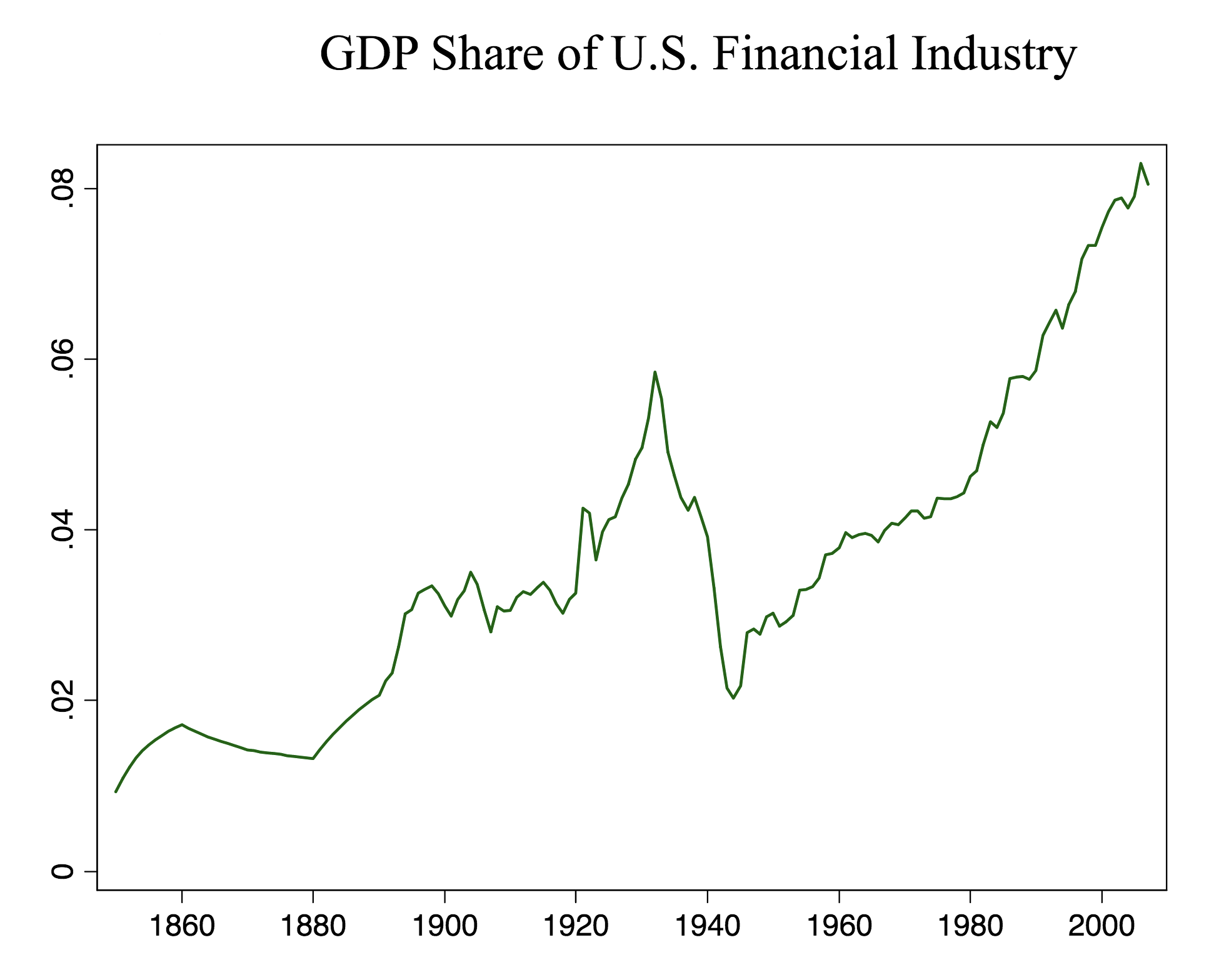
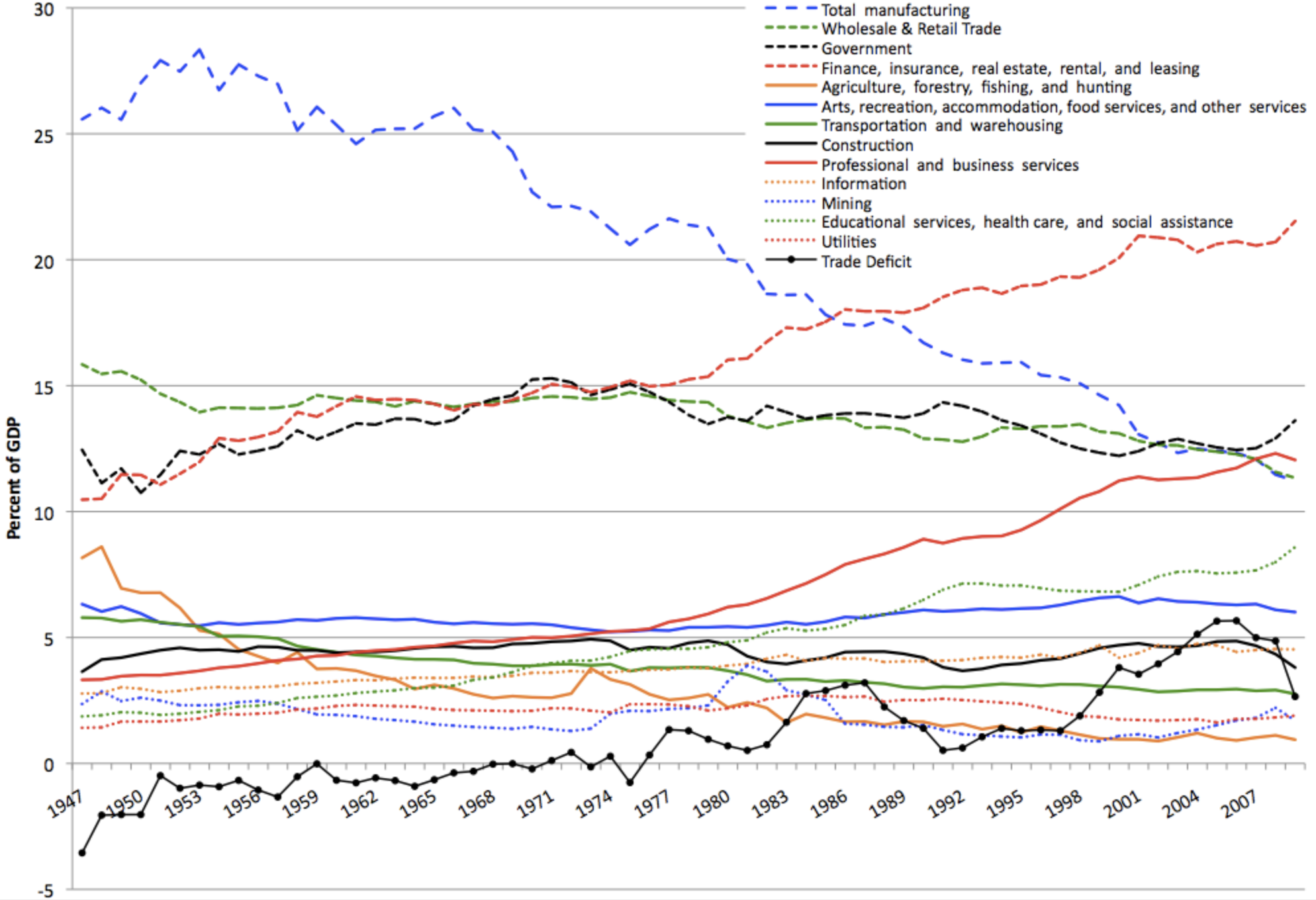
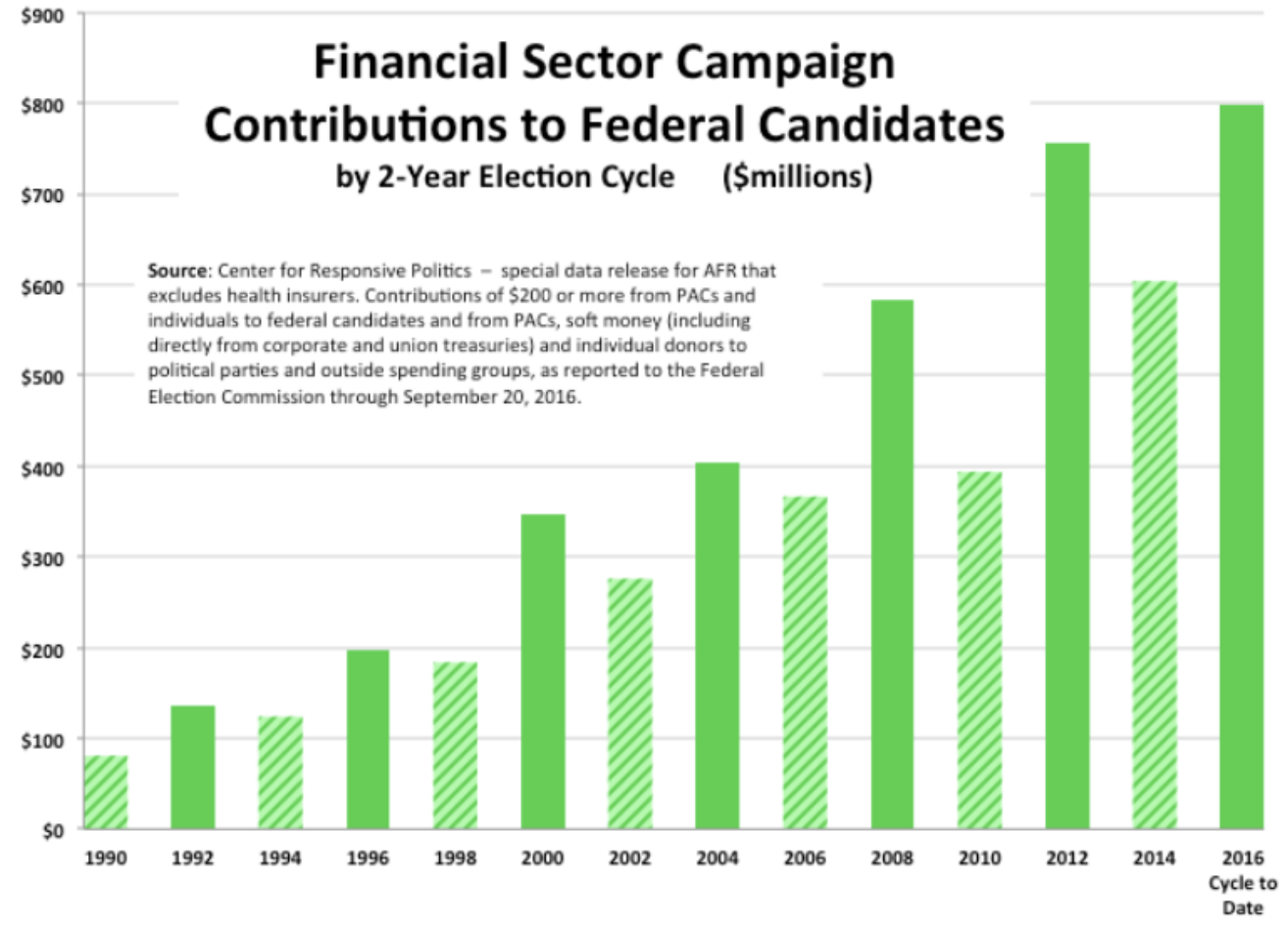
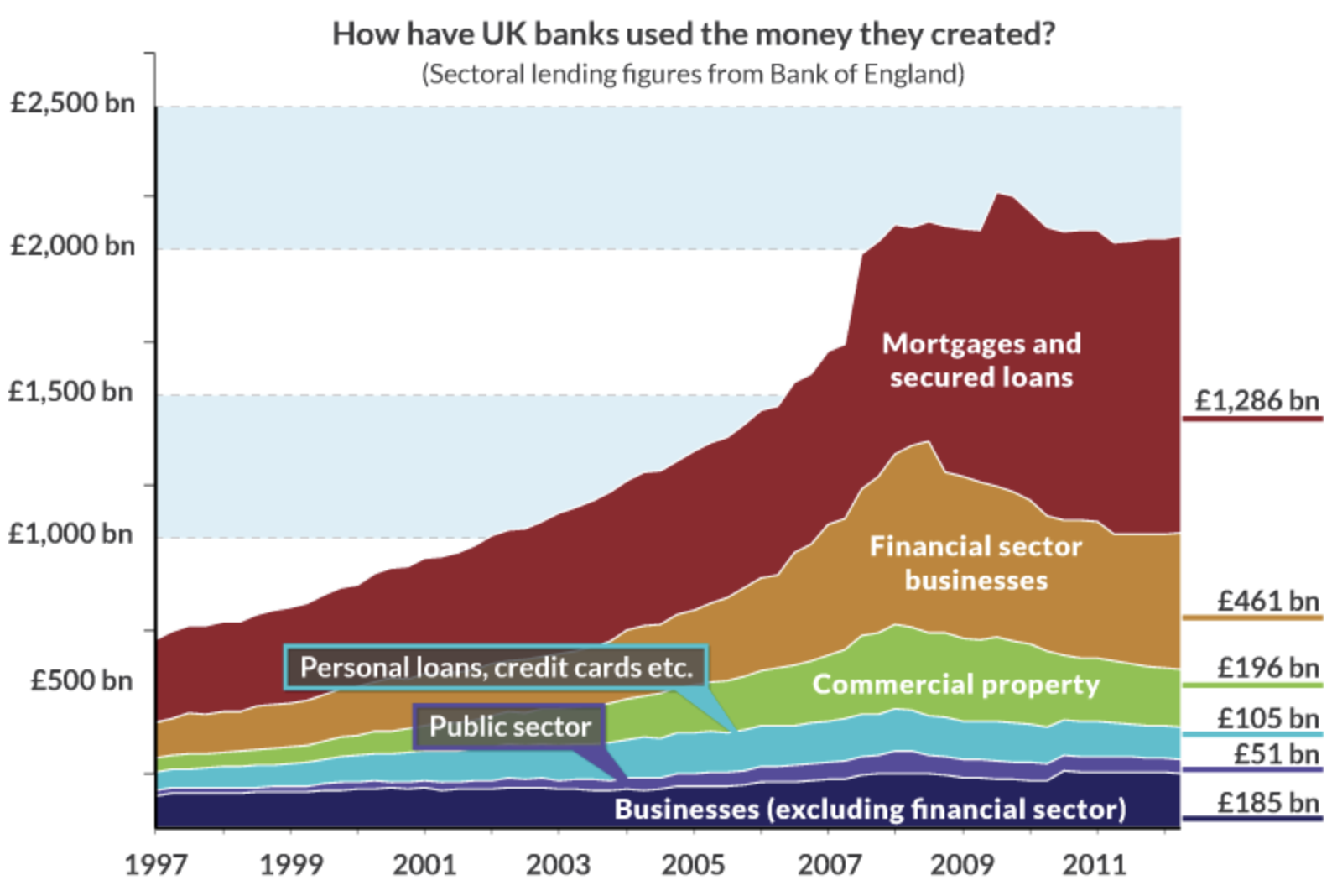
EXCESS
Signs of this excess can be found in several places. Insurance, which should be about the reduction of risk, is found to allocate only 30-50% of the premiums it collects to the reimbursement of materialized risk, i.e., losses. That means that the whole insurance value chain – brokers, insurance, reinsurance – costs twice as much or more as the total risk they are deemed to protect for. This can hardly be deemed efficient or acceptable, and represents a staggering amount of money, with insurance premiums accounting for an average 8% of GDP across the OECD. In other words, the cost of providing insurance, a notional financial contract with no “reality” attached to it, is close to 4% of GDP. That is twice the amount NATO expects member countries to spend on national defense.
Other examples of excess are given by certain hedge fund strategies. One particular strategy was, for instance, to arbitrage mutual funds using time differentials and correlation. Some funds allow investors to go in or out on a daily basis, creating an opportunity given that stocks around the world tend to move in tandem. Hedge funds made money by getting in or out of mutual funds at yesterday’s closing prices when they knew the market had gone up or down in other parts of the world while these funds where “closed” for the night. This was legal, and it is the job of clever hedge managers to arbitrage opportunities and loopholes such as these for their investors’ profit. But it resulted in a loss for long-term investors in these mutual funds, and no economic benefit was provided to the collectivity whatsoever.
Another example is given by The Commodity Futures Modernization Act of 2000 and the derivative trading of synthetic products. Under the Clinton administration, something that had been forbidden since the great depression became legal again: Investment banks could trade in derivatives of positions which had no natural counterparty.47 The idea was that this would enhance market liquidity. What happened however is that there were a lot of risky trades on positions that had no real counterparty on either side. This of course led to huge brokerage profits, but it amounted to little more than betting. All betters thought they were making money and paid disproportionate wages to their employees to reflect this. When the betting results finally had to be accounted for, large amounts of losses had to be recognized, notably on synthetic derivatives of mortgages. This resulted in large financial companies’ bankruptcies, creating a systemic risk to the whole financial system that had to be bailed out. Huffington Post
A graduate student in finance, an employee of Goldman Sachs, came to visit and present to a class some “innovative” trading strategies his firm was employing. Investment banks and brokers long had a strategy to sell or buy stock based on the orders of their customers. It is understandably forbidden for banks to buy ahead or sell ahead of their customer orders, what is called “front running.” But what the bank was doing was, legally, to buy or sell in advance securities correlated to the orders they knew they would have to pass. So, for instance, given that say Intel and Microsoft would move closely together, a bank with a larger sell order for Microsoft would sell Intel in advance first. That of course, undisclosed in the elaborate and thrilling presentation, would push Intel’s stock lower, which pushed down the correlated Microsoft share price, resulting in a slight loss for the client selling Microsoft stocks through the bank.
Examples like this, unfortunately, could fill their own book. Yet they are only anecdotal, and miniscule compared to the moral hazard problem created by large financial entities. The idea of being too-big-to-fail, the belief that the state will pay if things go wrong, and that in the meantime the high-risk, high-profit, high-compensation approach will prevail is unfortunately all but true. It has proven to be the case over and over, while the regulations imposed to tackle it have often only made things worse.
OVERCOMPLEX INEFFICIENT REGULATION
One prime example of counterproductive bank regulation is the Basel Rules. Revised several times over the years, their basic, sound, principle is that banks should be required to hold sufficient capital reserves to account for moral hazard, the natural tendency to poorly manage risk that falls on others. The sufficiency of those reserves is measured by a combination of risk-weighted assets, to prevent undue risk taking, and risk-weighted capital, to measure accurately the safety provided by the capital cushion. Simply put, the more risks one bank takes on its books, the more capital it should have.
This principle might seem simple enough, but it has led to ever-more-complicated forms of regulatory arbitrage. In the process, by changing the incentives, the regulation has sometimes created more risk-taking. For instance, it has been documented that the introduction of the second round of Basel rules, known as Basel 2, led undercapitalized banks in countries with low yields on government debt, deemed to be zero risk, to make loans in the most risky way (real estate, small and medium business) in order to compensate for being pushed into a low yielding corner for a large part of their assets. Because they were forced to hold a certain level of boring, no-risk, low-yield bonds, they all rushed to make the rest of their portfolios riskier – and in theory more profitable. The results were as predictable as they were lamentable. It created bubbles, and, indeed, banking crises in, for instance, Sweden and Japan.
As always, the next round of regulation tilted incentives the other way, and what we now observe is that banks have stopped lending to small and medium-sized businesses, creating a capital desert, a hidden liquidity trap, in this vital area of the economy. Even opening bank accounts has become a challenge for these businesses. The result has been the growth of a shadow banking sector that caters, at high prices, to the needs of these underserved segments. But this shadow banking is unregulated, creating still more problems. It has led, for instance, to massive defaults – and bankruptcy – in the peer-to-peer lending sector. It has been reported that in China, in the space of three years, half of P2P operators faced default, bankruptcy or closure. While there was little leverage or systemic risk, gullible investors have lost huge amounts of money. South China Morning Post
In practice, one can always observe that a change in regulation attracts some form of distortion or arbitrage. This is not a new phenomenon. Under the Byzantine Empire, for instance, the emperor set the sea loan, which included insurance if the shipment was lost at sea, at 12%. This resulted in extra risk-taking, with mariners embarking on voyages to dangerous destinations, knowing that the cost of their insurance had been capped by decree. James B. Greenberg
Modern regulations are not better, they are just more complex, leaving more opportunities to arbitrage legally, while ultimately contributing on an aggregate level to an inferior outcome, because they have only created another form of distortion.
On the bright side, this does create opportunity for a fortunate few. I oversee a fund lending to small- and medium-sized companies in Asia. For many years it has been able to achieve superior risk return. We were able to lend at over 10 percent interest with over 100% in collateral, something that finance textbooks would claim is impossible. This is not because we were “smart” in any special sense, but because banks, pushed by ill-considered legislation, had all but deserted their traditional lending role. Small and medium-size businesses were left desperate for financing as a result.
In the face of this, a former central banker has correctly pointed out that the solution is to let the market play, with as simple rules as possible to avoid opaque and dangerous arbitrage. For that to work, the size of individual financial actors has to be limited. This is sometimes referred as the Volcker rule. Rather than try to second-guess what the correct allocation of resources by financial actors should be, and in the process systematically create distortions, it is better to let the market run its natural course. This will result in bankruptcies, but they can no longer create unacceptable systemic risk because the participants are smaller. Knowledge that no government bailout is coming will act as a natural deterrent to excessive risk-taking.
We are unfortunately not taking that path, and what can be observed is a constantly high concentration of financial firms in all sectors. This consolidation creates systemic risk where it did not exist before. For instance, before the 2008 crisis, hedge funds were numerous and small, and their failures had no systemic impact during the crisis. Since then, the hedge fund ecosystem has been destroyed, and in its place, we have witnessed the emergence of a few very large funds whose bankruptcies would be major events with systemic significance.
Because the systemic risk is ever more present, we observe central banks and regulators going out of their way to support the largest financial firms in times of crisis, creating ever more incentives for higher risk taking.48 This results in ever larger financial crises that require massive government intervention to preserve the stability of a system that continues to grow more imbalanced.
Since the ’70s, financial crises have occurred with an increased frequency, at an average cost of 15% of GDP. Half of the 15% cost usually comes in the form of government interventions to bail out banks. Not only is the frequency increasing but the costs are as well. The last financial crisis was even bigger, but its rescue morphed into something else. At the peak of the intervention, the U.S. government guaranteed or lent up to $12 trillion, well over half of annual GDP. The U.K. government lent a similar 1.7 trillion pounds. But in the U.S. and the U.K., as in most countries, the money used for the bailout has been all but recovered. This is not because the crisis was mild in any way, but because it was so bad, and the system came so close to collapse, that the state intervention had to morph from a financial bailout to an asset reinflation and liquidation injection program known as QE, an unprecedented move by the central banks to avert a calamitous collapse. This insured that the direct financial intervention was refunded. But, this over-prolonged program is far from free, and indeed raises significant issues, as we will discuss later. CEPR, 2008 Bloomberg, 2010
One might wonder, in the face of these ballooning crises, why regulators are enacting all kinds of byzantine measures that ultimately lead to more arbitrage and risk-taking, even after we saw a near total collapse of the system with the 2008 crisis. The answer is unfortunately simple. First, regulators have not been able to hire the best people, as they are unable to offer competitive compensation and tend to be led by political appointees. Even when some are, unequivocally, smart, dedicated, and hard-working, they are up against an industry armed with the best lawyers, lobbyists and political connections, paid for by obscene profits Washington Post. Consider, for instance, that in the 2016 election cycle in the U.S., the finance industry spent twice as much on political contributions (to all sides) as any other industry Reuters. It has, in recent decades, become commonplace for the U.S. Treasury secretary to come from the ranks of leading investment banks. The largest contingent of U.K. lobbyists in Brussels and the E.U. work for financial firms. Worse, it is not just that the financial sector can place its people at the top of regulatory bodies, but that the regulators know that they can ultimately get jobs from banks’ lobbying firms or in their ever expanding compliance departments, in a form of revolving door soft corruption LobbyFacts.
This revolving door has solidified implicit state guarantees of too-big-to-fail financial institutions, which have created a moral hazard, fanning crises of increasing size and growing frequency. The next crisis may be so bad that states, hopelessly intertwined with big banks, will once again rush to bail them out. But this time, populist political forces could finally channel enough anger to stop them. The only question is which outcome would be worse.
